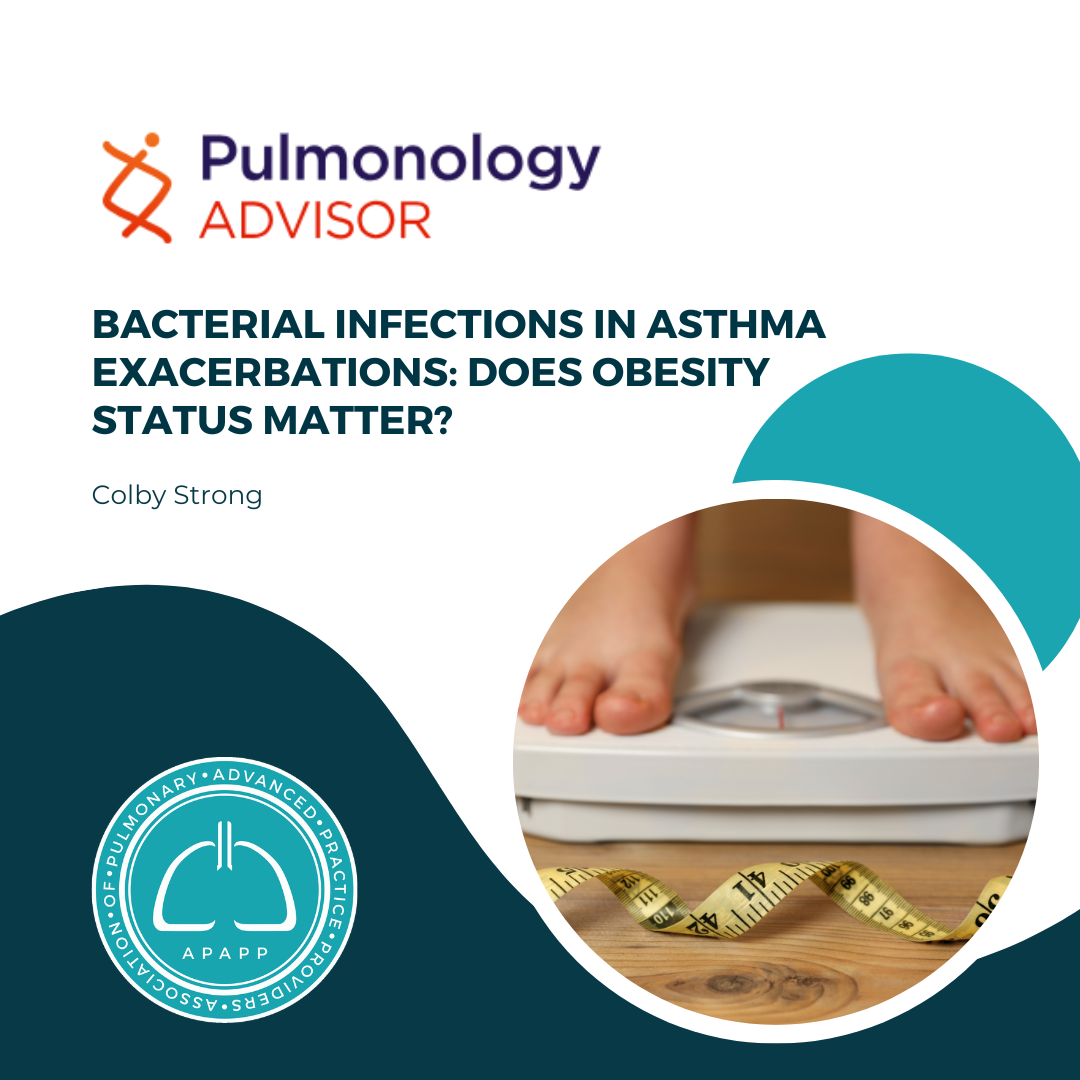Bacterial Infections in Asthma Exacerbations: Does Obesity Status Matter?

In the realm of respiratory health, asthma remains a significant challenge, affecting millions worldwide. While advancements in treatment have improved outcomes, certain factors continue to complicate the management of this chronic condition. One such factor is the susceptibility to infections, which can trigger exacerbations and lead to increased morbidity and healthcare utilization among asthma patients.
Published on Pulmonology Advisor and authored by Colby Strong, the research below sheds light on how obesity status influences the association between infections and asthma exacerbations. As APAPP members and frontline providers, understanding these dynamics is crucial for optimizing patient care.
Bacterial infections were found in 21.1% of patients with asthma exacerbations (AEs), and Chlamydia pneumoniae was associated with longer use of corticosteroids in patients with AEs without obesity. These were among study findings published in BMC Pulmonary Medicine.
Researchers compared clinical characteristics and pathogens associated with AEs in patients with and without obesity.
Adult patients with AEs from 24 secondary or tertiary medical institutes in the Republic of Korea were screened between January 2015 and December 2018. Eligible participants were diagnosed with asthma at least 6 months before the occurrence of an AE. Viruses and bacteria that were confirmed with microbiologic assessment at AE diagnosis were evaluated.
The analysis included 407 patients — 171 (42.0%) with obesity and 236 (58.0%) without. Their mean (SD) age was 66.4 (17.4) years, and 69.3% were women. The group with obesity had a significantly higher proportion of individuals who had never smoked vs the group without obesity (82.5% vs 73.9%, P =.026).
Of the cohort, 27.8% of patients were not receiving maintenance treatment at the time of AE. No significant difference occurred in asthma control level between the 2 groups, although more patients with vs without obesity had uncontrolled asthma (41.4% vs 30.5%, P =.077).
Bacterial infection was identified in 21.1% of patients with AE. Overall, viral or bacterial infection was identified in 205 (50.4%) patients: 119 patients had viral infection only, 49 had bacterial only, and 37 had both infections. Influenza virus was the most frequently isolated virus (n=67), followed by human rhinovirus (n=37) and respiratory syncytial virus (RSV; n=17). No significant difference occurred in the incidence of viral infection between the 2 groups.
Streptococcus pneumoniae (n=25), Pseudomonas aeruginosa (n=17), and C pneumoniae (n=10) were the dominantly isolated bacteria. The patients with obesity had a lower incidence of C pneumoniae infection than patients without obesity (1.0% vs 7.6%, P =.024).
By staying informed and engaged with the latest developments in pulmonary medicine, we can better provide the highest quality of care for our patients with asthma exacerbations (AEs).
Do you have articles or sources like Pulmonology Advisor you would like to share with the Association of Pulmonary Advanced Practice Providers (APAPP) community? Send us an email at .




